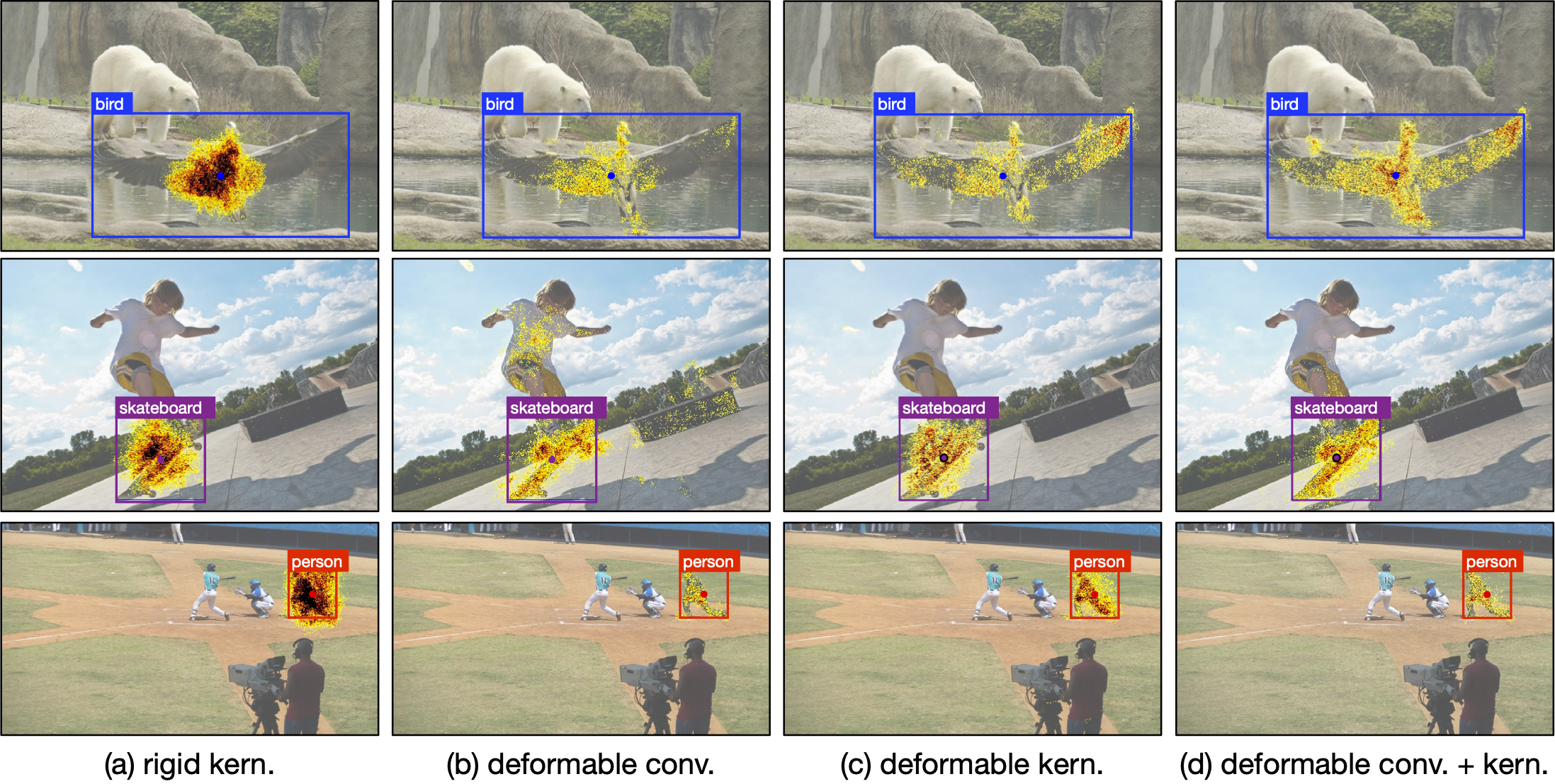Related Work
Brandon Yang, Gabriel Bender, Quoc V. Le, Jiquan Ngiam.
CondConv: Conditionally Parameterized Convolutions for Efficient
Inference.
In NeurIPS, Apr 2019.
[PDF]
[GitHub]
Xizhou Zhu, Han Hu, Stephen Lin, Jifeng Dai.
Deformable ConvNets V2: More Deformable, Better Results.
In CVPR, Nov 2018.
[PDF]
[GitHub]
Jifeng Dai*, Haozhi Qi*, Yuwen Xiong*, Yi Li*, Guodong Zhang*, Han
Hu, Yichen Wei.
Deformable Convolutional Networks.
In ICCV, Mar 2017.
[PDF]
[GitHub]
Wenjie Luo*, Yujia Li*, Raquel Urtasun, Richard Zemel.
Understanding the Effective Receptive Field in Deep Convolutional
Neural Networks
In NeurIPS, May 2016.
[PDF]
|




